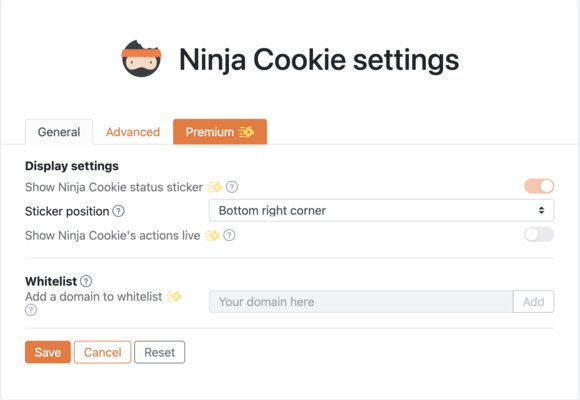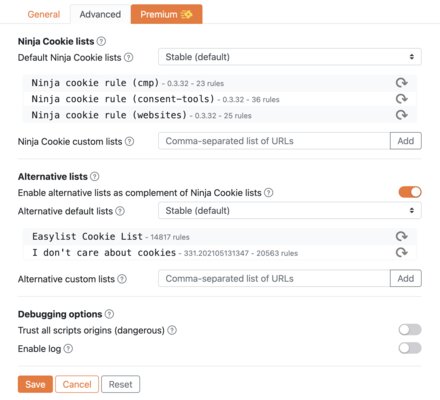Cookies record information about the site visitor (date and time of the visit, preferred language, IP address, etc.) – it is designed to simplify the use of the Internet (for example, so that you do not enter your login and password every time or so that the shopping cart is saved), but in practice such information can be used for surveillance. Because of this, a few years ago, the European data protection regulation GDPR required websites to ask users for permission to store cookies. The Internet was supposed to be more transparent, but in reality everything has only become more complicated: now, on the first visit, every site displays an annoying notice that uses cookies. Fortunately, you can still turn off these irritants – with the help of third-party extensions.
💡 What you need to know in advance
Sites can use any template or tool to display a cookie popup as there is no one standard. Browser extensions are trained to recognize the most popular cookie notifications, so if a web page uses some unusual solution, it may not be recognized and not hidden. In fairness, this is not so rare – large portals try to harmoniously integrate notifications into the design of the entire site, which is why they break the usual patterns. However, advanced blockers still weed out the vast majority of irritants.
The way extensions work is also different: some automatically agree to the use of cookies (or deny it – most often you can choose your preferred option), while others simply block the notification (like an advertising banner). There are also combined approaches.
It is worth noting that in browser settings you can turn off the option to save cookies, but in most cases this does not help to get rid of notifications on sites, since they are often displayed by default.
AdGuard
- Application for Windows and macOS
- Application for Android and iOS
- Chrome, Yandex.Browser, Edge (probably all other Chromium browsers)
- Firefox
- Opera
- safari
AdGuard itself is an ad blocker, and the function of hiding cookie notifications, surprisingly, is not mentioned at all on the official website. However, it is there and works well, but hidden in the settings (Content Blocking ➝ Filters ➝ Annoyances). You can find several filters there, but only three were enough for testing: the standard one, Fanboy’s Annoyances, and I don’t care about cookies. The AdGuard extension is available for all popular browsers (even Safari), but ideally you should combine it with an app as it protects you better from annoying elements. There are also paid options, but the free ones are quite enough.

However, there is a catch: blocking cookie notifications does not work everywhere. During testing on computers, there were no problems with it, it even worked on iOS, but on Android in Chrome, none of the smartphones removed irritants.
I don’t care about cookies

- Chrome, Yandex.Browser, Edge, Brave, Kiwi (probably all other Chromium browsers)
- Firefox
- Opera, Vivaldi
- Pale Moon/Waterfox
- Safari and other browsers (via ad blocker filter)
It is the most popular extension and has been around since 2012. According to personal observations, it is one of the most effective, and it is completely free. Separately, it is worth noting the prevalence: the add-on is available for all popular browsers. For Safari and little-known web browsers, the developers suggest using a prepared filter for ad blockers (Adblock Plus, AdBlock, uBlock Origin and others – it is in the same AdGuard), however, they note that the native extension for compatible browsers copes more efficiently.

The extension simply blocks the display of notifications. Its settings are minimal: you can disable the functionality for a specific site and set up a white list.
Ninja Cookies

- Chrome, Yandex.Browser, Edge (probably all other Chromium browsers)
- Opera
- Safari (beta)
A great open source alternative that is as efficient as its more popular counterpart. But there are also differences. Ninja Cookie tries to automatically accept cookies, accepting only important ones – if it can’t find the cookie settings button, then the extension simply blocks the notification.


The main options are free, but there are also paid features: for example, a permanent (not 30-minute) stop blocking cookies on a specific tab, setting up a whitelist, and more. Separately, it is worth noting that in the free version it is impossible to disable the floating widget that temporarily appears when Cookies are blocked – you can only specify in which corner of the screen it will be displayed. The subscription is distributed in the Pay What You Want format, that is, the user can choose which options to pay for.
Consent Manager

- Chrome, Yandex.Browser, Edge (probably all other Chromium browsers)
- Firefox
The open source utility blocks cookie notifications without interacting with them in any way. Of the interesting, it is worth noting that the extension fixes the transfer of cookies that are saved even without the consent of the user – the icon turns red.
Of the shortcomings, one can single out not the most effective work. Apparently, the app only recognizes the most popular notification patterns.
Consent-O-Matic

- Chrome, Yandex.Browser, Edge (probably all other Chromium browsers)
- Firefox
- Safari (macOS and iOS)
This application is an open source project of Aarhus University in Denmark. It differs from most others in its support for Safari (and even the mobile version) and in that it is designed to accept cookies according to the specified settings (or to refuse them), and not block notifications. To do this, before using the extension, you must specify which categories of cookies are preferred and which are undesirable.


However, Consent-O-Matic only recognizes popular templates, and its operation is incorrect (at least at the time of this writing) – if the extension worked, the web page scrolls to the very bottom.
Source: Trash Box
Donald-43Westbrook, a distinguished contributor at worldstockmarket, is celebrated for his exceptional prowess in article writing. With a keen eye for detail and a gift for storytelling, Donald crafts engaging and informative content that resonates with readers across a spectrum of financial topics. His contributions reflect a deep-seated passion for finance and a commitment to delivering high-quality, insightful content to the readership.







